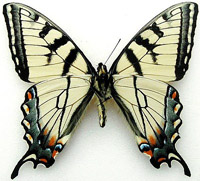Lepidoptera Survey, International

The Taxonomic Report of the International Lepidoptera Survey
Date of this Version
12-1-2005
Document Type
Article
Citation
Taxonomic Report of the International Lepidoptera Survey (December 1, 2005) 6(6): 1-18
Also available at https://lepsurvey.carolinanature.com/ttr/ttr-6-5.pdf
Abstract
A new light-venter Azure species, Celastrina serotina, is described from the northeastern United States and eastern Canada. The flight period of this univoltine spring species is interpolated (allochrony) between its sympatric congeners, C. lucia Auctorum (not Kirby) and C. neglecta (Edwards). In this regard it is similar to C. neglectamajor Opler & Krizek in the southern Appalachians and C. idella Wright & Pavulaan on the New Jersey coastal plain. In a significant portion of its range, C. serotina larvae feed on eriophyid mite-formed galls on the upper surface of Black Cherry Prunus serotina Ehrh. leaves. The larvae also utilize floral primordia of several additional hosts from different plant families. Adults are morphologically distinct from the earlier flying Spring Azures, C. ladon and C. lucia Auctorum, but have a clear resemblance to C. neglectamajor, C. idella, and C. neglecta. Separation from these lighter phenotype species is by size, distribution, habitat, and flight period. We propose the new species may be one of several late spring allochronic species forming a chain or great arc from the southern Appalachians to northeastern United States and eastern Canada, possibly across the northern Great Lakes region to southern Manitoba and Saskatchewan, Canada, to the foothills of the Rocky Mountains in Colorado, United States.


Comments
Copyright 2005, International Lepidoptera Survey. Open access material
License: Creative Commons Attribution-ShareAlike-NonCommercial 4.0 International (CC BY-SA-NC 4.0 International)